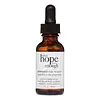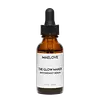What's inside
What's inside
 Key Ingredients
Key Ingredients

 Benefits
Benefits

 Concerns
Concerns

No concerns
 Ingredients Side-by-side
Ingredients Side-by-side

Water
Skin ConditioningPentylene Glycol
Skin ConditioningGlycerin
HumectantPalmitoyl Tetrapeptide-7
Skin ConditioningPalmitoyl Oligopeptide
CleansingGlutathione
Allantoin
Skin ConditioningAloe Barbadensis Leaf Juice
Skin Conditioning1,2-Hexanediol
Skin ConditioningPotassium Ascorbyl Tocopheryl Phosphate
AntioxidantHydrolyzed Soy Protein
HumectantCarbomer
Emulsion StabilisingButylene Glycol
HumectantPEG-7 Glyceryl Cocoate
EmulsifyingParfum
MaskingSodium Hyaluronate
HumectantSodium Hydroxide
BufferingCaprylyl Glycol
EmollientPolysorbate 20
EmulsifyingGlyceryl Polyacrylate
Limonene
PerfumingMaltodextrin
AbsorbentPotassium Sorbate
PreservativeEthylhexylglycerin
Skin ConditioningDisodium EDTA
Chlorphenesin
AntimicrobialBHT
AntioxidantPhenoxyethanol
PreservativeWater, Pentylene Glycol, Glycerin, Palmitoyl Tetrapeptide-7, Palmitoyl Oligopeptide, Glutathione, Allantoin, Aloe Barbadensis Leaf Juice, 1,2-Hexanediol, Potassium Ascorbyl Tocopheryl Phosphate, Hydrolyzed Soy Protein, Carbomer, Butylene Glycol, PEG-7 Glyceryl Cocoate, Parfum, Sodium Hyaluronate, Sodium Hydroxide, Caprylyl Glycol, Polysorbate 20, Glyceryl Polyacrylate, Limonene, Maltodextrin, Potassium Sorbate, Ethylhexylglycerin, Disodium EDTA, Chlorphenesin, BHT, Phenoxyethanol
Water
Skin ConditioningAscorbic Acid
AntioxidantEthoxydiglycol
HumectantAloe Barbadensis Leaf Juice
Skin ConditioningVitis Vinifera
MaskingGlycerin
HumectantSodium Hyaluronate
HumectantMagnolia Officinalis Bark Extract
AntimicrobialTocopherol
AntioxidantXanthan Gum
EmulsifyingFerulic Acid
AntimicrobialLecithin
EmollientDisodium EDTA
Sodium Metabisulfite
AntioxidantCitrus Aurantium Dulcis Callus Culture Extract
Skin ConditioningEthylhexylglycerin
Skin ConditioningMaltodextrin
AbsorbentTriethanolamine
BufferingPhenoxyethanol
PreservativeWater, Ascorbic Acid, Ethoxydiglycol, Aloe Barbadensis Leaf Juice, Vitis Vinifera, Glycerin, Sodium Hyaluronate, Magnolia Officinalis Bark Extract, Tocopherol, Xanthan Gum, Ferulic Acid, Lecithin, Disodium EDTA, Sodium Metabisulfite, Citrus Aurantium Dulcis Callus Culture Extract, Ethylhexylglycerin, Maltodextrin, Triethanolamine, Phenoxyethanol
 Reviews
Reviews

Ingredients Explained
These ingredients are found in both products.
Ingredients higher up in an ingredient list are typically present in a larger amount.
Aloe Barbadensis Leaf Juice comes from leaves of the aloe plant. Aloe Barbadensis Leaf Juice is best known for helping to soothe sunburns. It is also anti-inflammatory, moisturizing, antiseptic, and can help heal wounds.
Aloe is packed with good stuff including Vitamins A, C, and E. These vitamins are antioxidants, which help fight free-radicals and the damage they may cause. Free-radicals are molecules that may damage your skin cells, such as pollution.
Aloe Barbadensis Leaf Juice also contains sugars. These sugars come in the form of monosaccharides and polysaccharides, folic acid, and choline. These sugars are able to help bind moisture to skin.
It also contains minerals such as calcium, 12 anthraquinones, fatty acids, amino acids, and Vitamin B12.
Learn more about Aloe Barbadensis Leaf JuiceDisodium EDTA plays a role in making products more stable by aiding other preservatives.
It is a chelating agent, meaning it neutralizes metal ions that may be found in a product.
Disodium EDTA is a salt of edetic acid and is found to be safe in cosmetic ingredients.
Learn more about Disodium EDTAEthylhexylglycerin (we can't pronounce this either) is commonly used as a preservative and skin softener. It is derived from glyceryl.
You might see Ethylhexylglycerin often paired with other preservatives such as phenoxyethanol. Ethylhexylglycerin has been found to increase the effectiveness of these other preservatives.
Glycerin is already naturally found in your skin. It helps moisturize and protect your skin.
A study from 2016 found glycerin to be more effective as a humectant than AHAs and hyaluronic acid.
As a humectant, it helps the skin stay hydrated by pulling moisture to your skin. The low molecular weight of glycerin allows it to pull moisture into the deeper layers of your skin.
Hydrated skin improves your skin barrier; Your skin barrier helps protect against irritants and bacteria.
Glycerin has also been found to have antimicrobial and antiviral properties. Due to these properties, glycerin is often used in wound and burn treatments.
In cosmetics, glycerin is usually derived from plants such as soybean or palm. However, it can also be sourced from animals, such as tallow or animal fat.
This ingredient is organic, colorless, odorless, and non-toxic.
Glycerin is the name for this ingredient in American English. British English uses Glycerol/Glycerine.
Learn more about GlycerinMaltodextrin is a polysaccharide. It is derived from starch such as rice, corn, wheat, or potato starch.
In food, Maltodextrin is used to improve the texture and thicken a product. Due to its structure, it can help create a gel texture. As an emulsion stabilizer, it helps keep the ingredients in a product together.
As a polysaccharide, Maltodextrin has moisturizing properties. Polysaccharides are a type of carbohydrate. The top layer of skin uses polysaccharides to retain water, keeping the skin hydrated.
Maltodextrin is water soluble and has a sweet taste.
Learn more about MaltodextrinPhenoxyethanol is a preservative that has germicide, antimicrobial, and aromatic properties. Studies show that phenoxyethanol can prevent microbial growth. By itself, it has a scent that is similar to that of a rose.
It's often used in formulations along with Caprylyl Glycol to preserve the shelf life of products.
Sodium Hyaluronate is hyaluronic acid's salt form. It is commonly derived from the sodium salt of hyaluronic acid.
Like hyaluronic acid, it is great at holding water and acts as a humectant. This makes it a great skin hydrating ingredient.
Sodium Hyaluronate is naturally occurring in our bodies and is mostly found in eye fluid and joints.
These are some other common types of Hyaluronic Acid:
Learn more about Sodium HyaluronateWater. It's the most common cosmetic ingredient of all. You'll usually see it at the top of ingredient lists, meaning that it makes up the largest part of the product.
So why is it so popular? Water most often acts as a solvent - this means that it helps dissolve other ingredients into the formulation.
You'll also recognize water as that liquid we all need to stay alive. If you see this, drink a glass of water. Stay hydrated!
Learn more about Water